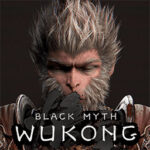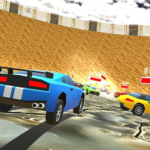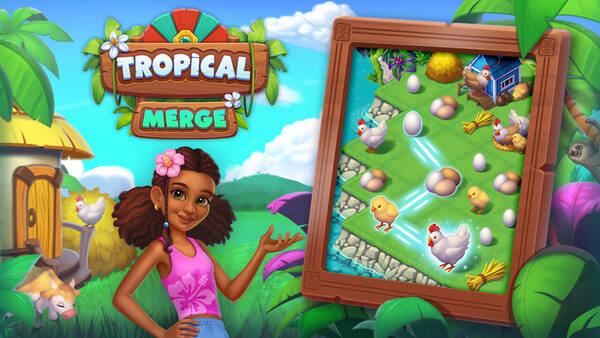The Legend of Zelda, developed by Nintendo, is one of the most celebrated video game franchises of all time. First released in 1986, it introduced players to a vast world of fantasy, puzzle-solving, exploration, and heroic storytelling. Over the decades, Zelda has transformed from a top-down 8-bit quest into a breathtaking open-world masterpiece while retaining its core identity: the eternal struggle between good and evil, embodied by Link, Zelda, and Ganon.
With over 20 titles spanning multiple generations, each entry in the series brings new mechanics, visual styles, and unforgettable experiences. This article delves into the evolution of The Legend of Zelda, breaking down key games, gameplay innovations, characters, pros and cons, and how the series continues to shape the gaming world.
1. The Birth of a Legend (1986–1991)
The Original Zelda (1986)
Released for the NES, The Legend of Zelda was groundbreaking:
-
Open-world design with non-linear exploration
-
Players could complete dungeons in varying orders
-
Items like the boomerang, bombs, and magic wand introduced strategic depth
This was one of the first games to include a battery save feature, allowing players to continue their progress—an innovation that made it revolutionary for its time.
Zelda II: The Adventure of Link (1987)
This sequel took a different approach:
-
Side-scrolling gameplay and RPG mechanics
-
XP system and magic spells
-
More combat-focused than puzzle-solving
Though divisive, it experimented boldly and laid groundwork for future elements.
2. The SNES Era: A Link to the Past (1991)
Return to the Top-Down Formula
A Link to the Past is considered a masterpiece by many fans and critics:
-
Dual worlds: Light World and Dark World
-
Introduced key items like the Hookshot and Pegasus Boots
-
More narrative-driven and polished visuals
Its structure, storytelling, and atmosphere became the template for many future Zelda games. It cemented the idea of hidden secrets, dungeons, and upgrades being intricately connected in an interconnected overworld.
3. Leap to 3D: Ocarina of Time (1998)
A Landmark in Gaming
The Legend of Zelda: Ocarina of Time for the Nintendo 64 was a milestone in 3D game design:
-
Introduced Z-targeting, now a standard in 3D action games
-
Seamless transitions between gameplay and cutscenes
-
Immersive music with the Ocarina, allowing time manipulation
This game delivered epic storytelling, unforgettable locations like Hyrule Field, Kakariko Village, and Temple of Time, and deeply emotional moments that resonate with players even today.
4. Expanding the Formula: Majora’s Mask and Wind Waker
Majora’s Mask (2000)
A darker, time-based sequel to Ocarina of Time:
-
72-hour time loop mechanic creates urgency and depth
-
Themes of grief, fate, and existential dread
-
Masks give Link various abilities and transformations
This game became a cult classic, revered for its emotional weight and experimental design.
The Wind Waker (2002)
-
Cel-shaded art style initially criticized but later adored
-
Vast ocean exploration using a talking boat
-
Combines traditional Zelda gameplay with sailing and treasure hunting
Both titles proved that Zelda could break its own mold and still deliver greatness.
5. The Portable Power: Handheld Zelda Titles
Game Boy and DS Entries
Zelda thrived on handheld consoles too:
-
Link’s Awakening: A surreal, charming adventure on the Game Boy
-
The Minish Cap: Introduced shrinking mechanics and rich 2D exploration
-
Phantom Hourglass and Spirit Tracks: Used DS stylus controls and train mechanics
These games retained the heart of Zelda while embracing portable innovation.
6. Twilight Princess and Skyward Sword: Console Evolution
Twilight Princess (2006)
A darker, more mature entry:
-
Wolf transformation and shadow realm mechanics
-
Large overworld and atmospheric dungeons
-
Released on both GameCube and Wii
Twilight Princess appealed to fans wanting a more serious tone, much like Ocarina of Time.
Skyward Sword (2011)
A prequel to the entire timeline:
-
Motion controls using Wii MotionPlus
-
Rich storytelling of the origin of Link, Zelda, and the Master Sword
-
Linear but puzzle-rich environments
Although polarizing due to controls, it played a critical role in Zelda’s lore.
7. Breath of the Wild: Reinventing Open-World Gameplay
Breaking Tradition
Breath of the Wild (2017) marked a dramatic shift:
-
Truly open-world, go-anywhere design
-
Physics-based puzzles and dynamic weather
-
Cooking, stamina, climbing, and survival mechanics
Link could now tackle challenges in any order, and the game respected player creativity in every interaction.
Cultural and Critical Impact
-
Over 30 million copies sold
-
Game of the Year 2017 (The Game Awards)
-
Widely cited as one of the best games of all time
It redefined open-world design and reintroduced Zelda to a new generation.
8. Tears of the Kingdom and Zelda’s Future
Tears of the Kingdom (2023)
The sequel to Breath of the Wild introduced:
-
Sky islands and underground exploration
-
New powers like Fuse, Recall, and Ascend
-
Expanded story and deeper dungeon experiences
It retained the same world while expanding it vertically and narratively, showcasing Nintendo’s creativity at its peak.
What Lies Ahead?
Fans speculate future titles may:
-
Explore multiplayer mechanics
-
Offer non-Hylian protagonists
-
Reimagine the classic 2D style with modern tech
The Zelda franchise has limitless potential moving forward.
9. Expert Rating and Final Verdict
The Legend of Zelda stands as one of the most beloved and influential franchises in video game history. From its humble 8-bit beginnings to the vast freedom of Breath of the Wild, the series has consistently pushed boundaries while staying true to its roots. The combination of puzzle-solving, exploration, action, and emotion ensures Zelda games remain timeless experiences.
Conclusion
The Legend of Zelda is not just a game series—it’s an enduring legend. With each installment, it teaches players about bravery, adventure, and curiosity. Whether you’re solving puzzles in ancient temples, paragliding across Hyrule, or battling Ganon for the hundredth time, Zelda offers something magical and unforgettable.
With the success of recent titles and the promise of future innovation, the series remains a shining symbol of what games can achieve when they blend imagination, craftsmanship, and heart. For new players and veterans alike, the call to adventure still echoes across Hyrule—and it’s never too late to answer.
































